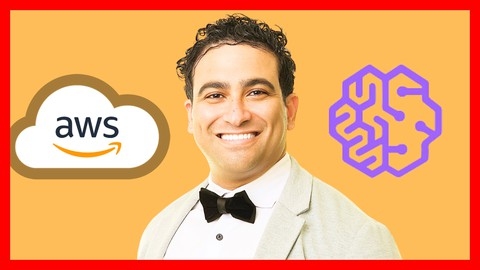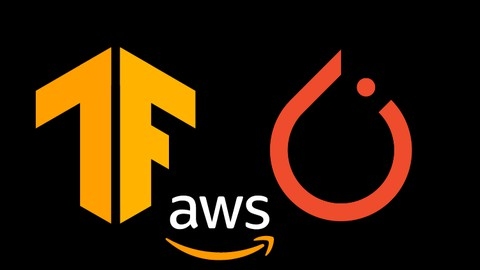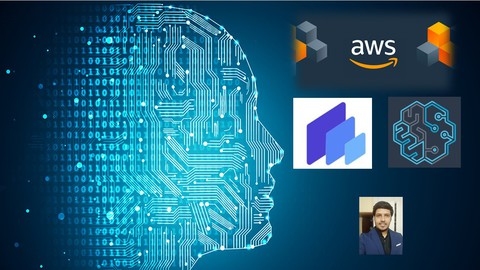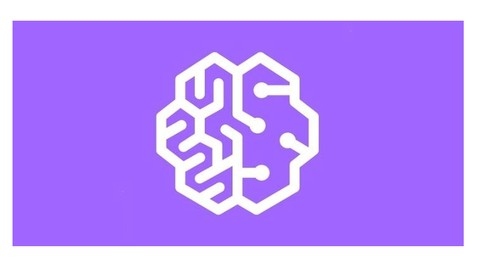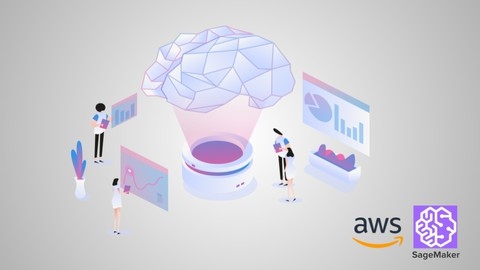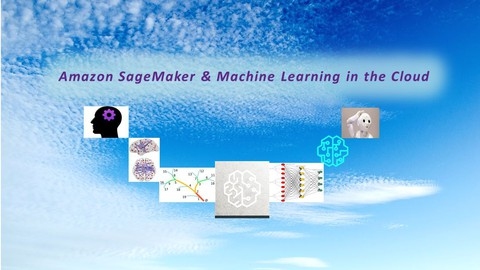AWS SageMaker is a powerful cloud-based platform that enables you to build, train, and deploy machine learning models at scale.
It simplifies the process of developing and deploying machine learning applications, making it accessible to developers and data scientists of all skill levels.
By mastering AWS SageMaker, you’ll be able to leverage the latest AI advancements to solve real-world problems and create innovative solutions.
Finding the perfect AWS SageMaker course on Udemy can be overwhelming, with countless options available.
You’re looking for a program that delivers comprehensive instruction, practical hands-on projects, and expert guidance to help you confidently navigate this complex platform.
For the best AWS SageMaker course overall on Udemy, we recommend AWS SageMaker Practical for Beginners | Build 6 Projects.
This comprehensive course offers a perfect balance of theory and practice, guiding you through six engaging projects that build your skills progressively.
You’ll delve into core SageMaker components, tackle real-world machine learning problems using Python, and gain a deep understanding of essential concepts like model evaluation metrics, activation functions, and gradient descent.
This course is ideal for beginners seeking a solid foundation in AWS SageMaker and hands-on machine learning.
We’ve curated a selection of other top-rated AWS SageMaker courses on Udemy to cater to different skill levels and learning styles.
Continue reading to explore our recommendations and find the perfect program to launch your AWS SageMaker journey.
AWS SageMaker Practical for Beginners | Build 6 Projects
You’ll start with the fundamentals of AI, machine learning, and cloud computing before diving into key SageMaker components like SageMaker Studio and model deployment.
The course takes a hands-on approach with six projects that build your skills incrementally.
You’ll begin with linear regression models to predict employee salaries and insurance premiums.
As you progress, you’ll tackle more advanced algorithms like XGBoost for retail sales prediction and disease diagnosis using techniques like principal component analysis.
The later projects focus on deep learning, guiding you through convolutional neural networks for image classification tasks like traffic sign recognition.
You’ll even get experience with AWS SageMaker’s AutoML capabilities for automating model training and tuning.
Throughout the projects, you’ll learn essential concepts like activation functions, gradient descent, backpropagation, overfitting, and model evaluation metrics like RMSE, MAE, R-squared, precision, recall, and area under the ROC curve.
The course emphasizes hands-on coding using Python, SageMaker SDKs, and popular libraries like scikit-learn.
You’ll build practical skills by working on real-world datasets across regression, classification, and deep learning use cases.
AWS SageMaker Machine Learning Engineer in 30 Days + ChatGPT
You’ll start with the fundamentals of AWS, AI, and machine learning before diving into hands-on projects with SageMaker.
The course begins by introducing you to key AWS services like S3 and EC2, as well as SageMaker’s core features.
You’ll learn data labeling techniques using SageMaker Ground Truth and exploratory data analysis with Pandas.
The curriculum then dives into regression models like linear regression and XGBoost, both in scikit-learn and SageMaker.
As you progress, you’ll tackle classification problems using algorithms like logistic regression, KNN, naive Bayes, and random forest.
The course covers hyperparameter tuning strategies like grid search and Bayesian optimization.
You’ll also learn to leverage AutoML tools like AutoGluon and SageMaker Autopilot for no-code machine learning.
Importantly, the course explores using ChatGPT for programming tasks like code generation, debugging, and documentation.
You’ll learn to build machine learning workflows with AWS Lambda functions too.
Throughout, you’ll work on capstone projects to solidify your understanding.
The hands-on approach ensures you gain practical experience alongside theoretical knowledge.
Machine Learning, Deep Learning + AWS Sagemaker
You’ll start by learning the fundamentals of Python, Pandas, NumPy, and data visualization techniques.
The course then dives into machine learning concepts like linear regression, classification, clustering algorithms like K-means, and ensemble methods like random forests and gradient boosting.
For deep learning, you’ll explore neural networks, convolutional neural networks (CNNs) for image classification tasks like CIFAR-10 and Cassava Leaf Classification, and recurrent neural networks (RNNs) like LSTMs for sequence data.
You’ll also learn about transformers like BERT for natural language processing tasks.
The course covers advanced topics like Bayesian learning, variational Bayes, and probabilistic programming with PyMC3.
You’ll learn about regularization techniques like L1 and L2 regularization to prevent overfitting.
For deploying models, you’ll learn how to use AWS Sagemaker for processing data, training models, hosting them for inference, and monitoring with CloudWatch.
You’ll also learn about other deployment options like FastAPI and Streamlit.
The course utilizes popular libraries and frameworks like Scikit-Learn, TensorFlow, PyTorch, Keras, and PyTorch Lightning.
You’ll work on real-world datasets from Kaggle and apply techniques like transfer learning, data augmentation, and semantic segmentation.
No-Code Machine Learning Using Amazon AWS SageMaker Canvas
The course starts by introducing you to machine learning and Amazon Web Services (AWS).
You’ll learn what SageMaker is and how it’s used for machine learning, with a specific focus on SageMaker Canvas.
The setup section walks you through creating a SageMaker domain and user, as well as setting up data in S3 buckets for use with SageMaker.
You’ll get a comprehensive walkthrough of the SageMaker Canvas interface, ensuring you’re comfortable navigating the platform.
The real fun begins with four hands-on projects.
The first project involves banknote authentication, where you’ll add training data, build and use a model for prediction, and validate the accuracy of batch predictions.
The second project tackles spam SMS detection, while the third focuses on customer churn prediction.
The fourth project is particularly interesting, as it covers wine quality prediction.
You’ll learn how to add and join datasets, build a model, and predict test data.
There’s even an assignment where you’ll predict the quality of white wine.
Throughout the course, you’ll explore important features like versioning in SageMaker Canvas.
The course concludes by providing guidance on obtaining datasets for practice, getting help on SageMaker Canvas, and next steps for further learning.
You’ll gain hands-on experience with real-world use cases, making it an excellent choice for anyone interested in this field.
AWS SageMaker MasterClass
This course starts with an introduction to machine learning concepts, covering regression, classification, pipelines, and hyperparameter tuning.
You’ll learn about model evaluation metrics, an essential skill for any machine learning practitioner.
The course then dives into cloud computing, explaining AWS and its various services.
You’ll get hands-on experience with AWS SageMaker, Amazon’s machine learning platform.
From setting up a notebook instance to using built-in algorithms like Linear Learner, you’ll gain practical skills.
Interestingly, the course also covers AWS SageMaker Canvas, which allows you to build machine learning models without writing code.
Additionally, you’ll explore the AWS SageMaker Marketplace, where you can find pre-trained models and algorithms.
You’ll learn theoretical knowledge and practical skills, making it a well-rounded option for anyone interested in this field.
Amazon SageMaker
You’ll start by learning what AWS SageMaker is and understanding its pricing model.
The course then dives into setting up the AWS console, SageMaker domains, roles, and Studio environments.
One of the highlights is the introduction to SageMaker Canvas, a no-code interface for building machine learning models.
You’ll learn how to use Data Wrangler for data preparation and explore ready-to-use models for text, documents, and images.
Model deployment with Canvas is also covered.
The course explores SageMaker JumpStart, which provides pre-trained models and solution templates.
A JumpStart example notebook walks you through the process.
You’ll then transition to using the Python SageMaker SDK, a powerful tool for building and deploying models programmatically.
The latter part focuses on Amazon Bedrock, which provides foundational models for text and image generation.
You’ll learn how to connect to Bedrock via the Python API and work with models like Amazon Titan for text generation and Stability AI for image generation.
Parameters for text and image generation are explained in detail.
Finally, the course covers the Retrieval Augmented Generation (RAG) framework, which combines retrieval and language models for enhanced text generation.
An example workflow demonstrates RAG in action.
NumPy, Pandas, Matplotlib in Python using Amazon SageMaker
The course starts by introducing you to AWS SageMaker, Python basics, data structures like lists, tuples, sets, and dictionaries.
You’ll then dive into control flow statements like if-else and loops, along with functions and object-oriented programming concepts.
This lays a solid foundation for working with NumPy arrays, which the course covers next.
A significant portion is dedicated to Pandas, a powerful library for data manipulation and analysis.
You’ll learn how to work with Pandas data structures, perform operations, handle missing data, and more.
The course also covers Matplotlib, a plotting library used for data visualization.
You’ll learn how to create various types of plots and customize them.
To solidify your learning, the course includes several projects, such as a dice roll simulator, rock-paper-scissors game, and a hospital management system.
For the latter, you’ll work with CSV files, generate patient IDs, create tokens, add doctor comments, and generate patient reports.
Along the way, you’ll also get exposure to file handling, web scraping, and computer vision using OpenCV.
Machine Learning on AWS SageMaker for Beginners
The course begins with an introduction to cloud computing, explaining what it is and why it’s useful.
You’ll then dive into machine learning concepts like supervised, unsupervised, and reinforcement learning.
Once you have the fundamentals down, you’ll learn how to use AWS SageMaker, Amazon’s machine learning platform.
You’ll create an AWS account, spin up a Jupyter notebook instance, and upload datasets to an S3 bucket for analysis.
The real fun begins with five hands-on projects.
You’ll tackle the famous Titanic survival prediction problem using binary classification models.
Then, you’ll build a model to predict Boston house prices based on various features.
For population segmentation, you’ll apply principal component analysis (PCA) and K-means clustering algorithms.
But the highlights are the digit classification project using the MNIST handwritten digits dataset and the XGBoost model, and the linear learner model you’ll train for the Titanic survival problem.
You’ll get experience with data preprocessing, exploratory analysis, model training, deployment, and prediction.
The course covers key services like S3, Jupyter notebooks, and the different model types you can build and deploy with SageMaker.
Using Sagemaker Pipelines get ML models approved and deploy
You’ll start by getting an XGBoost Regression model approved for production, putting your skills to the test with a quiz.
Next, you’ll tackle a more challenging task – getting a drug Multiclass Classifier approved for production at 95% accuracy, followed by another quiz to reinforce your learning.
The course then dives into training, registering, and deploying a Multiclass XGBoost Model into production, with a quiz to ensure you’ve mastered the concepts.
You’ll also learn how to train, register, deploy, and make predictions with models, culminating in a final quiz.
Amazon SageMaker & Machine Learning in the Cloud
You’ll start with the basics, covering the core foundational knowledge of ML, independent of AWS and SageMaker.
This warmup section will help you build a solid foundation before diving into more advanced topics.
Once you’ve grasped the fundamentals, the course transitions to an intermediate level, where you’ll encounter thought-provoking questions and scenarios.
These will challenge your understanding of the ML development lifecycle management, secure architecture, storage management, and the integration of data analytics into the overall ML space in the cloud.
The advanced section is where the real challenge lies.
You’ll tackle complex use-case focused ML problems, delving deeper into areas like model debugging, monitoring, data preparation, visualization, and ML metrics.
This level is designed to push even experienced practitioners, ensuring you gain a comprehensive understanding of applied ML in the cloud.
Throughout the course, you’ll explore the intricacies of SageMaker, including its domains, Studio, Notebooks, ML environments, and the CRISP/DM concepts.
You’ll learn about the data lifecycle in SageMaker, the AWS services involved, data wrangling, batch data processing, and integration with big data environments like EMR.
The training section covers the choice of built-in algorithms in SageMaker, setting up training jobs, distributed training, and the nuances of training data sources and modeling choices.
You’ll also dive into the inference lifecycle, ML Ops in and outside the cloud, and the integration of AWS services like Athena, Glue, Kinesis, and EMR for data analytics.
If you’re preparing for the MLS-C01 exam, this course is an excellent resource.
It covers all four domains of the exam curriculum through applied problem-solving questions, weighted according to the exam specifications.


